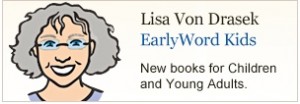The NYT BEST ILLUSTRATED:
A Judge’s Experience
The New York Times Book Review issue with the “Best Illustrated Books” list arrives in print this Sunday (see my takes on each specific title).
As those of us who have been watching this list for years know, it typically contains a surprising mix of books with popular appeal and those with arty sophistication. Although it is tempting to second guess and speculate on why one particular title made the list and another was left off, these conversations rarely reflect the actual considerations that went into the selections.
I had the honor to serve as a judge one year. At the time, children’s book editor Eden Ross Lipson encouraged us to write and share our process and deliberations. This is an outlier attitude. Most book selection juries, from the American Library Association’s Newbery to The National Book Awards, are asked to keep the discussions confidential, to allow for more free of expression of opinions. I recall that the only requirement imposed on the NYT Best Illustrated judges was to keep their appointments a secret until the announcement was made public. I was bursting but honored the request, even taking a vacation day from work for the deliberations so I didn’t have to disclose my participation to my library director.
That year there were three judges, one teacher/librarian, one critic, and one illustrator. Because of the secrecy, your fellow judges were a delightful surprise when they walked through the door. The session was just one day and included lunch with New York Times brass in the fancy corporate dining room. Lipson was on hand for help, but did not comment on the selections. We were encouraged to submit a short list of titles that we wanted to discuss. I agonized over that. What if I missed THE book? I needn’t have fretted. The room was crowded with carts and carts and carts piled with picture books.
There was no procedure manual. After introductions we quickly began sorting piles, books to discuss, books no one wanted to discuss. My surprise was that the illustrator had not “prepared” for this task by reading every picture book published that year. In retrospect, this was practical. The book reviewer and librarian had access to current children’s books and the professional obligation to read the year’s output widely and critically. The illustrator’s expertise is informed by a lifetime of work and study, allowing for seemingly quick judgments.
I had to remind myself that this wasn’t Lisa’s best picture book list but a list of outstanding books that this team created. The librarian often bowed to the illustrator’s pointing out the visual flaw or the critic’s observation of a jaded trope. As the teacher/librarian, I stood my ground against the visually stunning, artistically accomplished book about adoption that began with a baby left on a doorstep. One may quibble, but many of us who work with young children understand that a discussion of parental abandonment of infants is rarely an uplifting topic for story-time with five-year-olds.
And finally we confronted the physical books face-out across the table. Yes, these were the ones. This was a list we could be proud of. With exhaustion, I sighed. There was no book I would want to remove.
As I reviewed the ten old friends on that list, I thought I would be able to recall vividly the ones that I vehemently fought for and the ones that I was “talked in to.” Not so. There is not one title that I wouldn’t have fought for today. And yes there is a mix of the perfect read-aloud school books – Rain, written and illustrated by Manya Stojic (RH/Crown) and Market Day by Lois Ehlert — with the artistically accomplished outlier Gabrielle Vincent’s A Day, A Dog (Front Street Press).
Serving as a judge on the New York Times “Best Illustrated” was a joy and privilege, and I applaud the 2014 judges for their insight and expertise.

